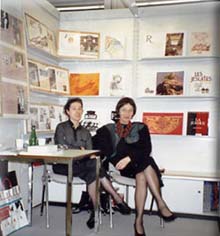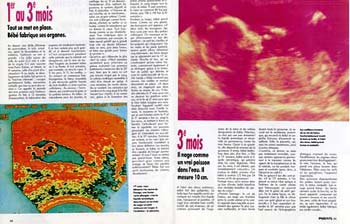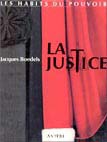| 1989 1993: Founded alone Antébi Publishing Cy |
|
 The French Publisher’s Weekly, Livres-Hebdo, of 19th of October 1990, wrote about the recent creation of a new publishing company : « Founder of Hologramme Publishing Cy, which she has left, Elizabeth Antébi has now created her own company, under her name, in a field she knows very well : Sumptuous coffee table books. She decided, from the start, to find co-publishers, in order to assure the distribution and spread of her books. » And the article gives a list of all the projects – some of them we did, others not, because of cost: books on Grey Eminencies and the Geography of the Worlds After Death; on Fragrances and the language of perfumes ; a series on Myths (Prince Charming, The Little Siren…). The French Publisher’s Weekly, Livres-Hebdo, of 19th of October 1990, wrote about the recent creation of a new publishing company : « Founder of Hologramme Publishing Cy, which she has left, Elizabeth Antébi has now created her own company, under her name, in a field she knows very well : Sumptuous coffee table books. She decided, from the start, to find co-publishers, in order to assure the distribution and spread of her books. » And the article gives a list of all the projects – some of them we did, others not, because of cost: books on Grey Eminencies and the Geography of the Worlds After Death; on Fragrances and the language of perfumes ; a series on Myths (Prince Charming, The Little Siren…).
 
Our first stand at the Frankfurt Fair (on the left, my wonderful assistant (Catherine Dubreil), ), with the dummies of the books in preparation (below, with Hanne Wendt et Wolfgang).
 
Published, in co-edition with Stock, the book produced by Elizabeth Antébi and written with Historian François Lebrun on the history of Jesuits from America to Asia, from the beginning to the present time, The Glory of God (1990).
 
Frankfurt’ Book Fair 1990. 1990.
Published, then, in co-edition with Ramsay, Votre Bébé avant sa naissance/Your Baby before Birth (1991), written by Dr Jean-Pierre Kutner with colour ultrasound scans
 The idea of this book came to me when I was pregnant with my daughter. The photos of the foetus in the books that people gave me were so terrible that I could not look at them, and I never thought I would feel this way. Therefore, I asked physicians of the Radiological Centre, in Paris, to show the adventure of the baby before birth, with a few blank pages at the end, to provide a photo-album for the parents. And, month after month, a gynaecologist-obstetrician, , J-P Kutner described what happened inside the body of the mother. The idea of this book came to me when I was pregnant with my daughter. The photos of the foetus in the books that people gave me were so terrible that I could not look at them, and I never thought I would feel this way. Therefore, I asked physicians of the Radiological Centre, in Paris, to show the adventure of the baby before birth, with a few blank pages at the end, to provide a photo-album for the parents. And, month after month, a gynaecologist-obstetrician, , J-P Kutner described what happened inside the body of the mother.
 Françoise and Jean-Pierre Kutner, with Tillmann Eichhorn, artistic director of this book and that on Justice. Françoise and Jean-Pierre Kutner, with Tillmann Eichhorn, artistic director of this book and that on Justice.
PRESS BOOK AND EXTRACT

The magazine « Parents » published many extracts in its 8-page special issue : :


 
Published Les Habits du Pouvoir : la Justice (1992), by lawyers Jacques Boedels with a preface by Jean-Denis Bredin, It received the Law Courts Literary Prize.
 Jacques Boedels, came to my office in Paris, sent by a friend. He had his arms full of files, and explained to me straight out, over the next twenty minutes, the symbolism of all the costumes from Emperor Charlemagne to those of the lawyers and bailiffs of today. He showed me drawings, paintings and sketches of costumes, even costumes of rabbis, pastors and academics…and I was seduced. The adventure of this book went on for two years – day and night. I had to reduce a wonderful thesis, very well written, to a few pages ; and wait for photos that never arrived on time. Happily, our dear Tillmann Eichchorn, Art director and go-between, worked wonders. And in the end, this masterpiece of (superb) writing, of beauty, of humour appeared and received the best Prize in the field. The author (and the publisher) are now preparing a (European) follow-up to it. Jacques Boedels, came to my office in Paris, sent by a friend. He had his arms full of files, and explained to me straight out, over the next twenty minutes, the symbolism of all the costumes from Emperor Charlemagne to those of the lawyers and bailiffs of today. He showed me drawings, paintings and sketches of costumes, even costumes of rabbis, pastors and academics…and I was seduced. The adventure of this book went on for two years – day and night. I had to reduce a wonderful thesis, very well written, to a few pages ; and wait for photos that never arrived on time. Happily, our dear Tillmann Eichchorn, Art director and go-between, worked wonders. And in the end, this masterpiece of (superb) writing, of beauty, of humour appeared and received the best Prize in the field. The author (and the publisher) are now preparing a (European) follow-up to it.
To buy it : Litec, librairie.dauphine@juris-classeur.com ( 27, place Dauphine - 75 001 Paris)
SUMMARY
Justice is a kind of theatre, with its costumes, ritual, production, actors. Why this ceremony ? For whom ? How can it be read? Could one say that it is a guarantee of protection, even freedom, behind the role play?
Jacques Boedels shows in this way the evolution of the professions of Justice in France (and France, the oldest « juridical theatre » in Europe, had influenced many other costumes, such as in many African countries, in Italy and Quebec), starting with the garments and their symbolic heritage from the earliest times of Emperor Charlemagne and of the Kings of France.
In the « catalogue of details », the sleeves of the lawyer, the two-pointed hat of a solicitor, the wigs, headdresses, beards and moustaches, the judge’s caps, the ties and bands, the “epitoge”(trappings), the decorations and the bell are readable signs showing the rank, the importance, the position and the role. As for the dress, it’s shared by the judiciary /administrators, receivers, protestant pastors and cantors in the synagogues. It has even inspired the costumes of the Chancellors of Universities, and professors in the Faculties of Medicine. And « the underwear » of Justice is often caricatured.
«The ongoing arguments over the quality, colour or length of the suits seem hardly futile, when we understand that these garments become the symbol of our vocation, the witness of our tradition, a sign of independence of political power, an expression of our perfect equality.» President of the Bar Guy Danet.
« At his birth, a child is bare. He doesn’t stay like that for more than few minutes. From womb to tomb, our suit reveals from which social group we come, how we live, what we see, and, from time to time, what we dream. It says much more about us than we could say ourselves. In this book, we discover French Justice, explained throughout seven or eight centuries, with its images, apparel, colours. The costume tells us, through images, how our society sees what a judge must be. » Jean-Denis Bredin, de l’Académie française.
In the Stalinist trials, costumes were all the same, grey : nothing was ever permitted that would distinguish the accuser from the counsel. These were no longer games. It was also the same in the world of Mao. And in military justice. On the contrary, in Nuremberg, each country had its own judiciary costumes.
In 1984, victim of taxes too high for an independent publisher of Beautiful Books, Antebi Publishing was closed. Its founder works now on the same kinds of themes/ for multimedia.
|




